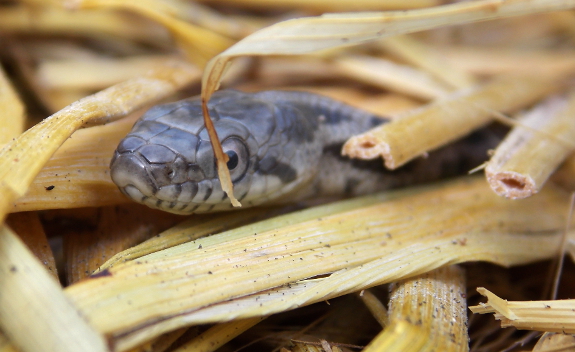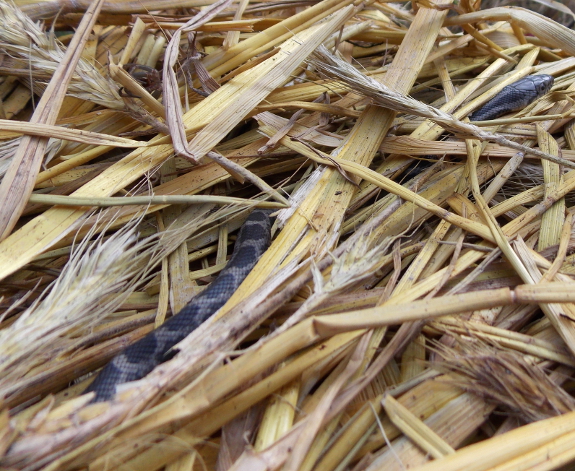
Baby snakes in the straw

We made a mistake
this year and left our straw
cache out at
the parking area under a tarp. It's been so wet that there
was no easy time to haul the bales in, so we figured we'd just get
them as we needed them. Unfortunately, the wind blew the
tarp back and got most of the bales damp, so they're now extremely
difficult to haul (even though Mark's still carrying through with
the endeavor).
On the plus side,
those slightly-decomposing bales seem to have provided the perfect
habitat for baby black rat snakes. Mark found some eggs
between two bales in September, and thrust them further into the
pile since he didn't know what else to do with them. The
eggs must have hatched in the interim, because two little snakes
turned up in the straw Thursday. Kayla isn't a fan of
snakes, and wasn't terribly thrilled to have her mulching job
include snake patrol, but I think even she could tell that these
guys are too cute to really be afraid of.

Actually, I thought,
at first, that this was an entirely new species for our farm,
until Kayla keyed the snake out in my field guide and discovered
that baby rat snakes look nothing like adults. Who would
have thought this prettily-patterned snake is going to be solid
black above by the time it gets two feet long?
(By the way, Kayla,
you guessed right --- these guys did just hatch.
Newly-hatched black rat snakes are twelve inches long. Hard
to imagine all that length folded up into a two-inch egg!)
Want more in-depth information? Browse through our books.
Or explore more posts by date or by subject.
About us: Anna Hess and Mark Hamilton spent over a decade living self-sufficiently in the mountains of Virginia before moving north to start over from scratch in the foothills of Ohio. They've experimented with permaculture, no-till gardening, trailersteading, home-based microbusinesses and much more, writing about their adventures in both blogs and books.
Want to be notified when new comments are posted on this page? Click on the RSS button after you add a comment to subscribe to the comment feed, or simply check the box beside "email replies to me" while writing your comment.
- Remove comment
- Remove comment
